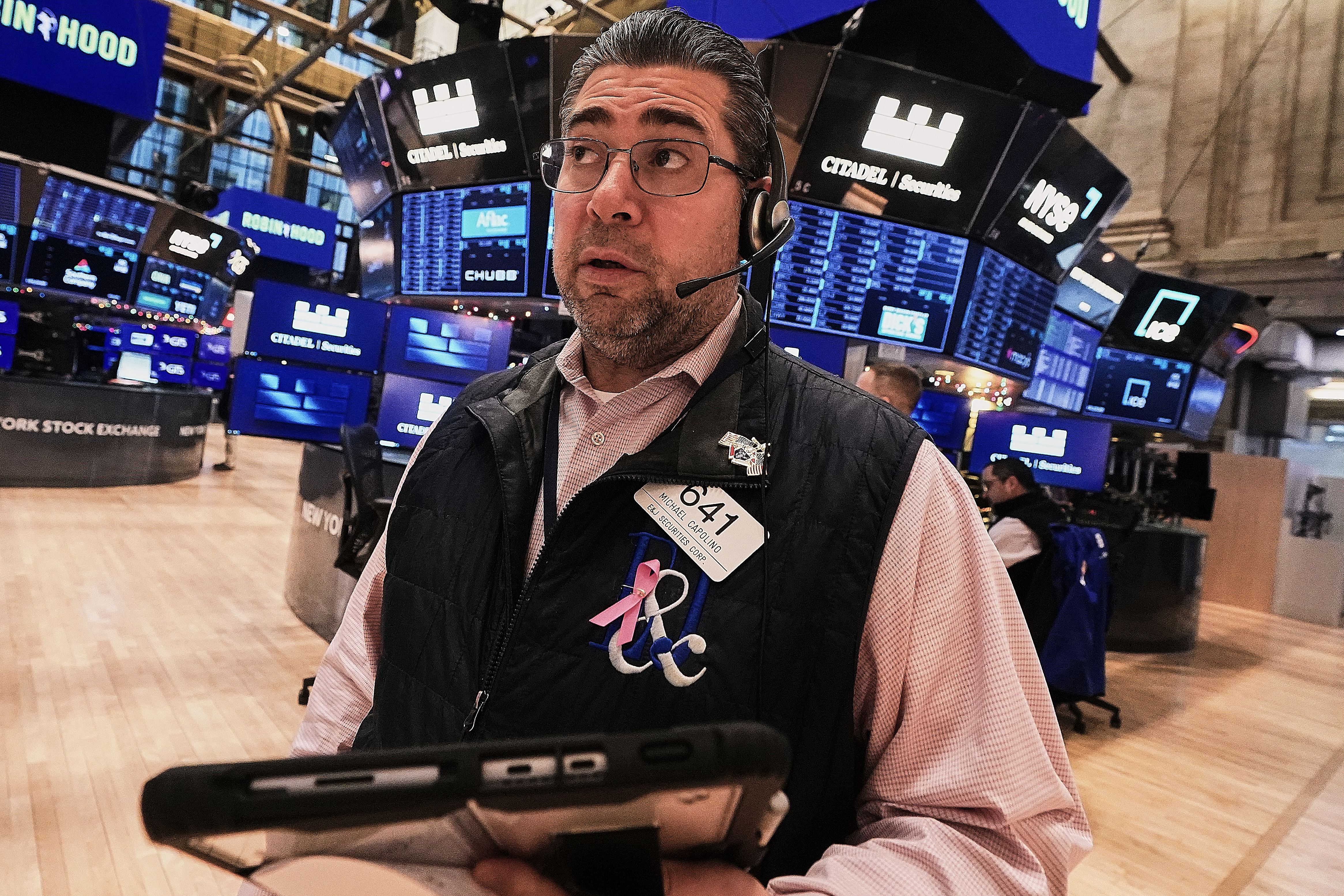Americans with disabilities go to the Social Security Administration to get support. The entity then decides who can actually get those benefits, but some of their denials, activists say, don't make sense.
There are two kinds of disabilities benefits the Social Security Administration provides.
One is known as Social Security Disability Insurance, or SSDI. It covers Americans between ages 18 to 65 who were able to work in some capacity while paying into the Social Security program, making them eligible to reap its benefits when later disabled by age or other factors.
For SSDI, the maximum federal amounts is $3,627 a month this year, but the average is estimated to be far lower at $1,483 monthly. That means for many receiving these benefits, it can still be extremely hard to live off what they're getting. And, they still don't have the option to work, even part-time, if they want to keep those benefits.
Then there's Supplemental Security Income or SSI. This is for people who may have been born with a disability or developed one during childhood that has kept them from earning a livelihood, or retired individuals above 65 who meet certain financial criteria.
Monthly maximum federal amounts for 2023 SSI beneficiaries are $914 for an eligible individual, $1,371 for an eligible individual with an eligible spouse, with an option of $458 to support an essential person, like a caregiver.
Those are the options for what people who qualify for the disability benefits can receive, but not everyone qualifies. That's because the SSA makes its determinations by looking at medical records, testimonials and other kinds of evidence.
There are five questions considered by the SSA when deciding disability benefits:
- Is the applicant currently working?
- Is their condition severe?
- Is their condition disabling?
- Are they able to do the work they did before the disability?
- Can they do any other type of work?
Nicole Maestas, an associate professor of health care policy at Harvard Medical School and a research associate of the National Bureau of Economic Research, can help explain the fifth and final question.

How disability misunderstandings, stigma impact mental well-being
Disability experts say it's common for doctors to misunderstand bodily autonomy, which can impact a person's mental health.
"Vocational factors are taken into consideration, and these are always: What remaining work capacity does the person have?" Maestas said. "That's the big question here. And is there a job somewhere in the national economy that this person could in fact do?"
The SSA considers whether a person can work other jobs in the economy despite their disability, and that's where many experts and disability advocates report issues.
The index the SSA has been using to decide whether someone could find work is one called the "Dictionary of Occupational Titles," and according to reporting from the Washington Post, a vast majority of the 12,700 titles in that dictionary were last updated in 1977.
This essentially means person's SSDI or SSI application could be denied based on whether they could work in a job market that's unlike the one today. And the proof is in the titles: Roles like nut sorter, dowel inspector and egg processor are on the list, which are practically defunct jobs in today's modern world.
This dictionary was created by the U.S. Department of Labor in 1938. The idea was to have a list of types of jobs available in the economy. But the department hasn't relied on it since 1991, which was also the last time any new titles or jobs were added to or updated in the index.
Scripps News tried to ask exactly why the SSA uses it, but the administration did not respond to our request for comment.
In a statement to the Washington Post earlier this year, Acting Social Security Commissioner Kilolo Kijakazi said the SSA had "enlisted vocational experts to provide more detailed and current information about the jobs available in the national economy." She added that the agency was working "on creating our own occupational data source informed by [the Bureau of Labor Statistics] that best reflects the current job market."
Reporting from the Post shows that the SSA's effort to create its own data source has cost at least $250 million since 2012, yet the agency still relies on the outdated index.
"It's interesting to me that this tool is so heavily relied upon by the Social Security Administration when the agency that created it doesn't even use it anymore," said Maria Town, the president and CEO of the American Association of People with Disabilities.
While data is hard to come by on exactly what percentage of denials occur based on these outdated jobs, Town told Scripps News it's still an issue that concerns advocates like her. Reporting from the Washington Post shows this number could be in the thousands, and Town agrees.
"There are probably thousands of denials that occur based on these inaccurate job titles and the lack of an update to this dictionary of titles," Town said. "This whole process is so fraught and really riddled down with misguided assumptions about the nature of disability and the nature of work that, again, I think it's really hard to have data that pinpoints where a denial occurred."
So, there are some people with disabilities who can't work and get denied benefits based on these outdated jobs. Then there are people who get denied because they can work, but their disability means they can't work enough to pay their bills and still need support.
Overall, many health economics experts and disability advocates ultimately take issue with the fact that the SSA's definition of disability places such a big emphasis on the inability to work.
The Americans with Disabilities Act, or the ADA, defines a person with a disability as someone who has a physical or mental impairment that substantially limits major life activities, has a history or proper record of such an impairment, and is perceived by others as having the impairment.
"The ADA definition does not force a judgment on whether or not someone will be able to work or be productive," Town said. "Social Security basically says that the only way you can be sort of deserving or eligible for benefits is if you are so disabled that you cannot work."

How your neighborhood could impact your risk of disability
A study found older adults living in disadvantaged neighborhoods face more physical challenges.
Maestas says that in her prior research, she found that many disabled people want to work but may still need assistance to make ends meet, which means they can't work.
"It's not by far the majority, but there is a subset of people," Maestasa said. "And this is what our research has found: that the subset — say, 1 in 5 — actually has some significant work capacity. We really need a system that would allow people to combine benefits support with whatever work they can do and ideally a system of identifying, you know, helping people identify the work capacity that they have."
For advocates like Town, these denials have become a bigger cause for concern since 2020, when the pandemic hit.
"Many people, including myself, would call it a mass disabling event, and honestly, with the end of the public health emergency, this is going to continue," Town said.
Town says factors like reduced health screenings and the prevalence of long COVID, which is recognized as a disability in some cases, have contributed to a rise in chronic diseases and disabilities across the country. That rise, she says, underscores the need for the SSA to update the index it uses to make disability insurance decisions. A 2022 report from the Center for American Progress, a progressive-leaning think tank, supports Town's statement, finding that COVID-19 likely disabled 1.2 million more people by the end of 2021.
"Every year we anticipate new new members of the disability community — whether it's people kind of aging into disability or acquiring a disability through something like a car wreck or having cancer," Town said. "But with long COVID, the rate at which people are becoming disabled is increasing."
This issue is compounded even more by inflation. In its annual cost of living adjustment this year, the Social Security Administration did increase benefits by a record 8.7% — the highest increase in 40 years. But even with that significant increase, millions of Americans still don't feel like enough.
"One reason why it doesn't feel like enough is that it is based on the inflation that occurred over the past year," Maestas said. "That means people have been living this past year on their benefit amount for 2022, which was fixed for the year, or they began getting this increased benefit for 2023. But the adjustment always follows the actual inflation that people are living."
According to the Bureau of Labor Statistics, just over 21% of people with a disability were employed in 2022. By contrast, the employment-population ratio for people without a disability was more than 65%.










